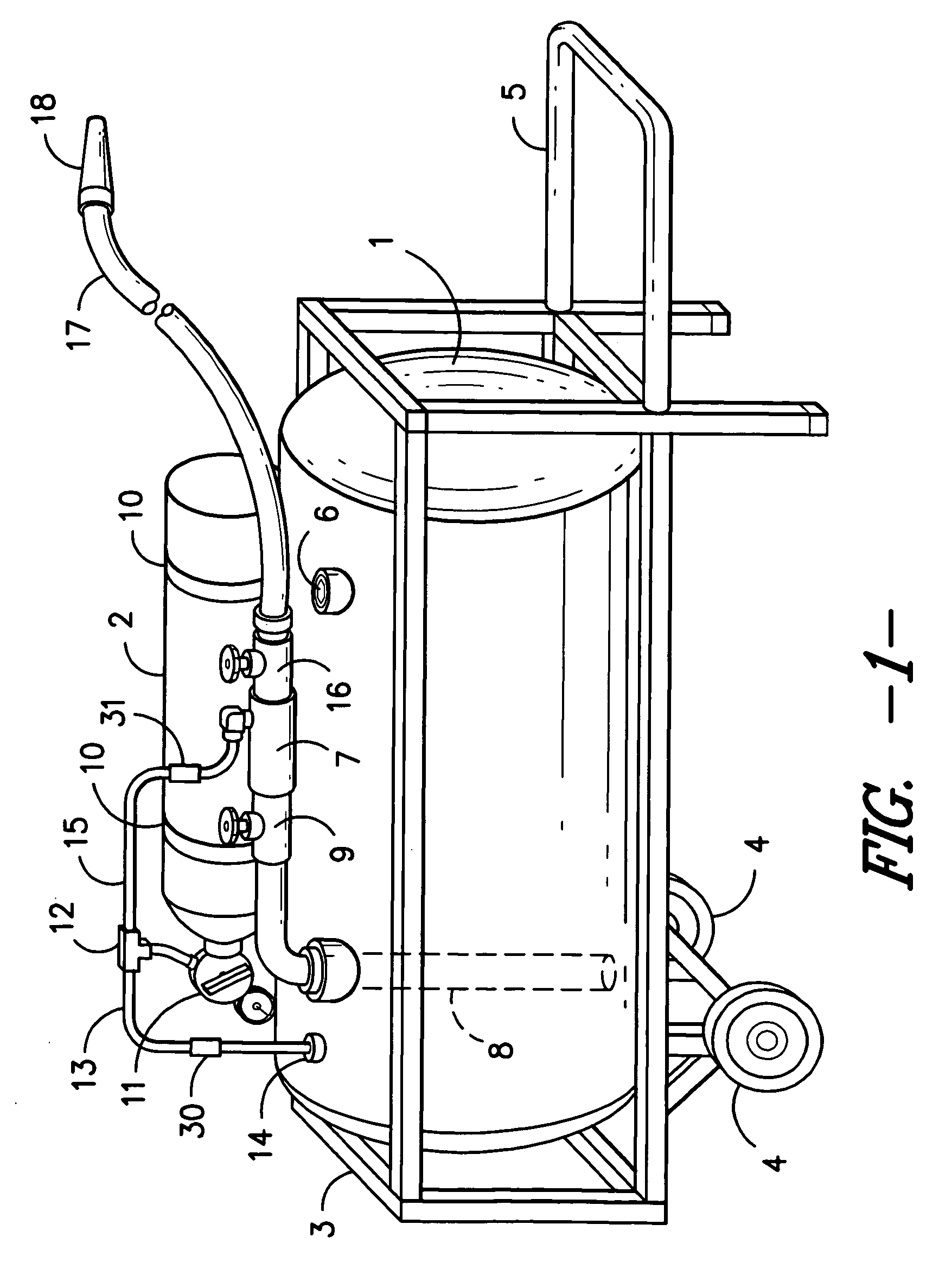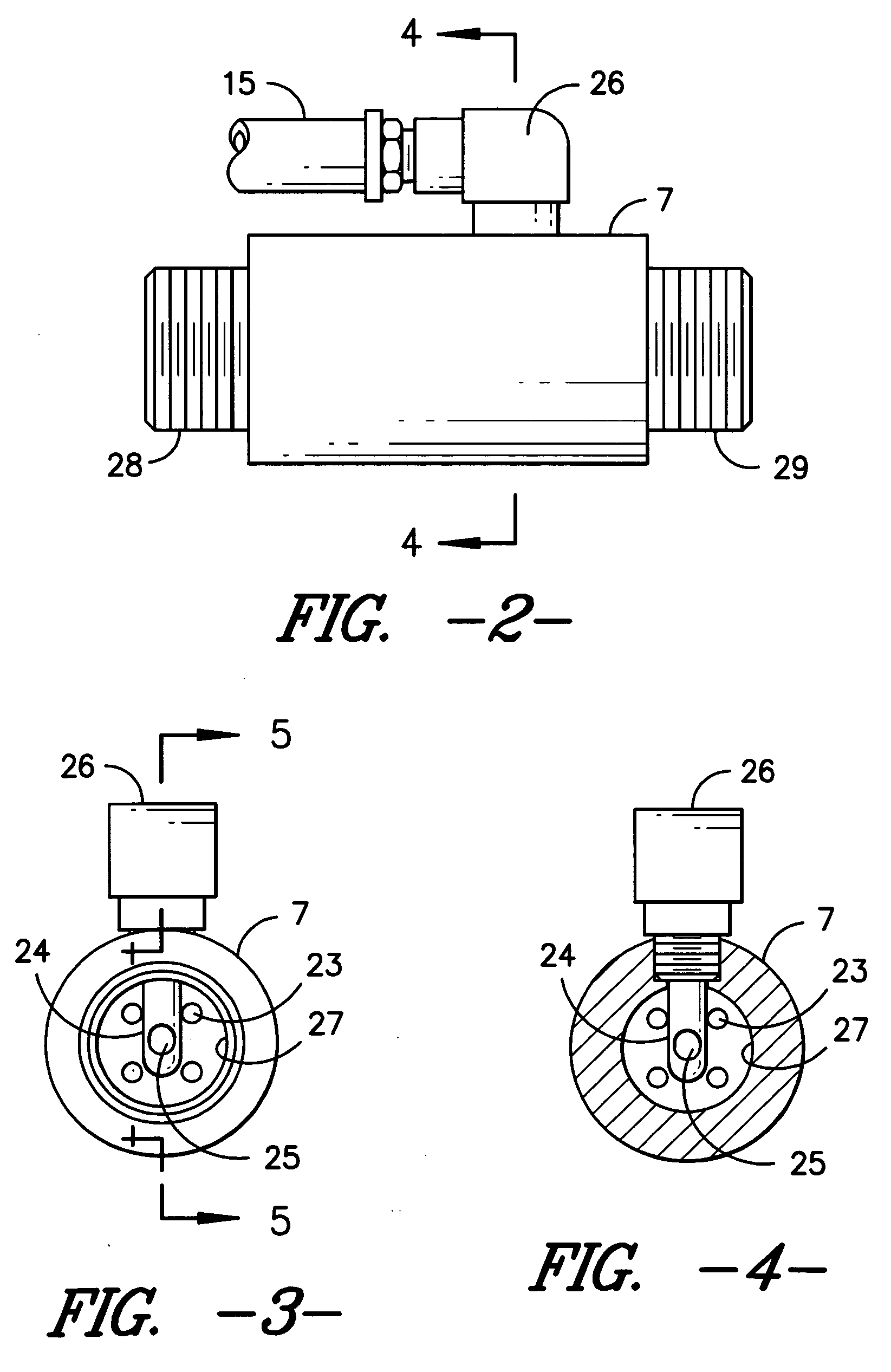Fire suppression apparatus and method for generating foam
a technology of fire suppression apparatus and foam, which is applied in the direction of combustion process, combustion type, burner, etc., can solve the problems of reducing the velocity of the aqueous stream, the inability to smother fire with foam generated from air gas, etc., and achieves the effect of enhancing the velocity of the foam-forming liquid, enhancing uniform dispersion, and maximizing the entrainment of gas
- Summary
- Abstract
- Description
- Claims
- Application Information
AI Technical Summary
Benefits of technology
Problems solved by technology
Method used
Image
Examples
Embodiment Construction
[0027]Without limiting the scope of the invention, the preferred embodiments and features are hereinafter set forth. All United States patents cited in the specification are incorporated by reference. Unless otherwise indicated, the conditions are 25° C., 1 atmosphere of pressure, 50% relative humidity, and the percentage of materials in compositions are by weight. Nozzle diameters for non-circular nozzles, such as slots, are calculated across the shorter dimension. In the case of multiple nozzles having non-uniform nozzle diameters, an average nozzle diameter is calculated using an area weighting, that is, each nozzle diameter measurement is weighted by the area at the discharge point of the nozzle.
[0028]Referring to FIG. 1, the fire suppression apparatus has liquid tank 1 and compressed gas tank 2, which are mounted on frame 3. Frame 3 includes wheels 4 and handle 5, for manual transport of the apparatus to the scene of a fire. It is also within the scope of the invention for the ...
PUM
 Login to View More
Login to View More Abstract
Description
Claims
Application Information
 Login to View More
Login to View More - R&D
- Intellectual Property
- Life Sciences
- Materials
- Tech Scout
- Unparalleled Data Quality
- Higher Quality Content
- 60% Fewer Hallucinations
Browse by: Latest US Patents, China's latest patents, Technical Efficacy Thesaurus, Application Domain, Technology Topic, Popular Technical Reports.
© 2025 PatSnap. All rights reserved.Legal|Privacy policy|Modern Slavery Act Transparency Statement|Sitemap|About US| Contact US: help@patsnap.com



